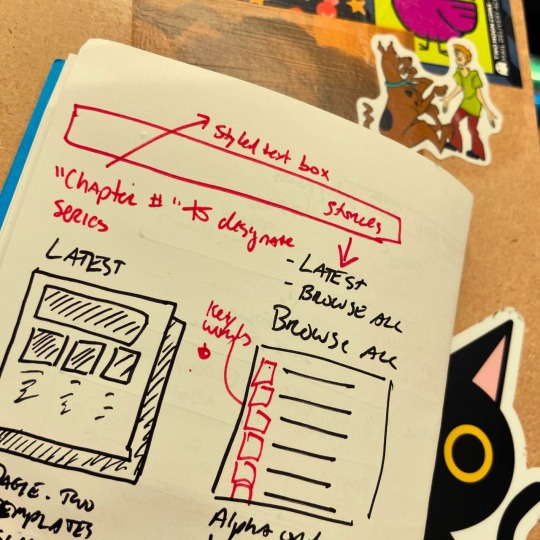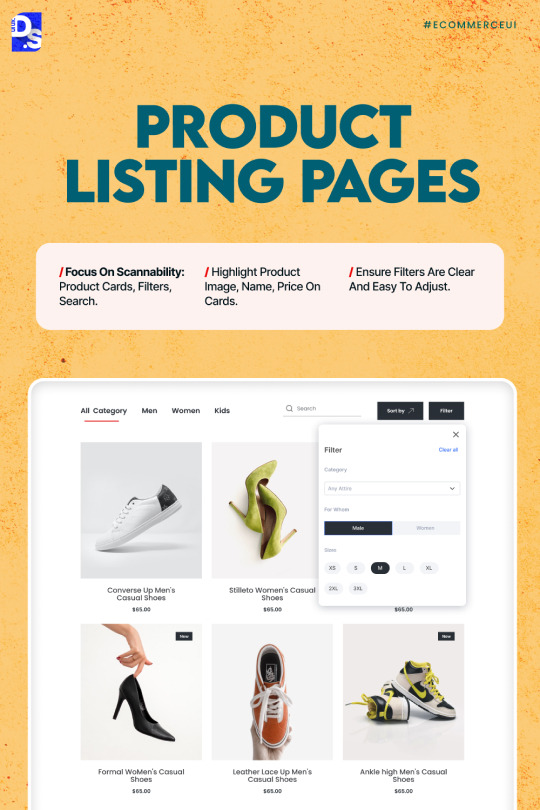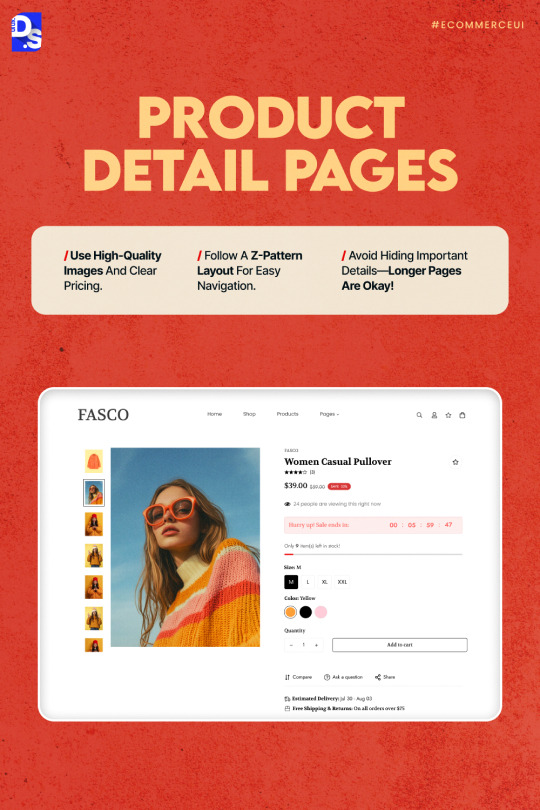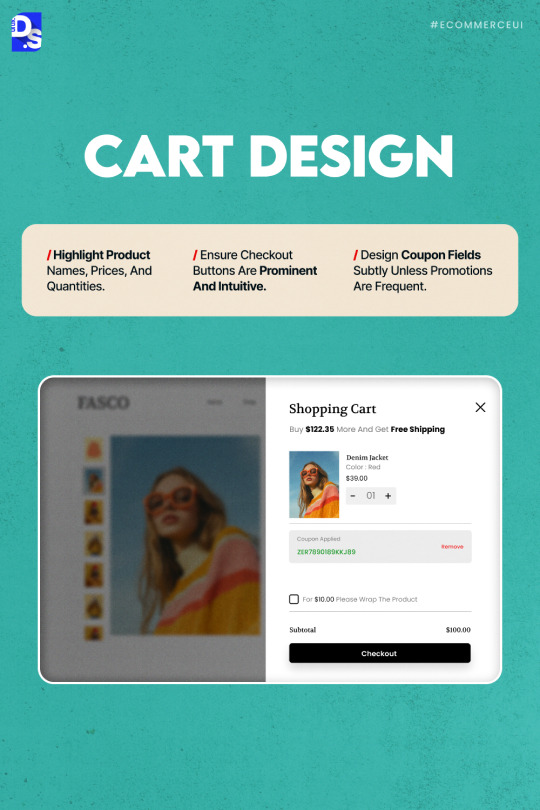#eCommerce design
Explore tagged Tumblr posts
Text
Shopify has a blog problem, this creates a really simple and straightforward opportunity for freelance designers/programmers

Earlier this year I settled the editorial decisions I needed for a lot of blogging going forward, and recently I've experimented (repeatedly) with the idea of having a blog on a separate platform, or using Shopify's system.
Having two sites would allow me to blog on a WordPress site, but creates... two sites, therefore complicates everything more. More maintenance, design, etc. etc.
I am actively seeking to make my life easier so I am foregoing two sites and learning to live with the limitations.
A personal struggle to the surprise of no one.

You can use WordPress and thread Shopify through it via the "buy" button, which is a shortcut for small stores and/or larger stores where you are very comfortable in WordPress.
You cannot use Shopify and thread WordPress through it.
Which is a shame.
Because Shopify's native blog platform is fucking horrible.

An independent graphic designer who can program, or a programmer who can design, cannot solve Shopify's problems.
They are inherent to the system and likely built on legacy code Shopify doesn't want to update because it'll cost a fortune.
I'll just be mad about this until the market forces them to address this opportunity and they revamp their blogging platform. That's fine.
Or maybe decades will pass and they won't. That's... fine too. I guess.

I am rambling this out because if I were in the business of freelance graphic design and/or programming I would jump on this immediately. I used to be and always shared opportunities with friends and it was fun and I kinda miss that aspect of the life.
I'm not in that business, and I have in-house programming, please don't pitch me, but do consider pitching... pretty much everyone with a Shopify site and a blog as Phase 01 of your plan, and everyone who has a Shopify site and does not have a blog as Phase 02 of your plan.
Here is what I would tackle:
Shopify blogs have two structures: "blog" and "blog post".
A blog in Shopify is essentially a category in WordPress, with more limitations, such as, a blog post can only be in a single "blog". That sucks but it means your life as a designer/developer gets more interesting.
Most Shopify themes come out of the box with 1 "blog" and 1 "blog post" template. They are exceptionally simple, usually. I would build a few test templates and offer them to clients "these will be modified to fit your direct style."
For some reason -- I'm guessing focus -- most blogs in Shopify have the image on top. If you structure "image on the left, image on the right" as options you can offer clients, you've just tripled their layout capabilities.
For another reason, I don't know why, but almost all shopify blog post templates I've seen do not have sidebars. Which is insane?! You can control that from the fucking "blog post" template so it would be an easy win.
You could work around the "a post can only be in one blog on Shopify" issue by having a sidebar that pulls the latest 3 (or 5 or whatever) posts as links for other blogs on the site: TEST SITE has 3 blogs. When you're looking at a post on BLOG 01, in the sidebar, you see a link to the latest post on BLOG 02 and BLOG 03. Similarly, when you're looking at a post on BLOG 02, the sidebar has the latest post from BLOG 01 and BLOG 03 (and so on)
The template I use, off the shelf, uses the Shopify's user name and details for the author of the blog. Once a blog post is created, in Shopify, you cannot alter the author. This is dumb as fucking rock salt on slug popcorn. But, again, systematic, I'm pitching ideas on ways around it -- exclude this and just use a CUSTOM DATA field to allow the Shopify owner to pick the relevant author. This cuts down on the need for extra Shopify users, tremendously, and builds in the opportunity for WordPress-style author footers on blog posts.
Emulate the very common filtering on products -- dropdowns, sorting mechanisms -- with tags on a sidebar on BLOG templates. This will be tricky because you cannot hook into the Search & Discovery function, but it's absolutely no where near impossible. And would be amazingly useful.

Overall Shopify is a decent platform with significant advantages.
There blogger apps but holy shit that is so unnecessary. If they were a one-time-fee, it would be fine, but they aren't, they're generally $20+/month.
I'm not interested in paying for a service that ties me into another tech system that I am fucked if they go out of business, jack up their prices, introduce a feature I don't like, or remove a feature I do like.
For something like a blog system.
Which relies HEAVILY on very structured, single-built, near-infinitely-reused templates.

A low effort, high yield opportunity exists for independent designer/programmers to come up with a suite of designs and say "hey with some very simple modifications, we can take 1 of the following, apply it to your store, and dramatically increase your in-site blogging opportunities."
You start with a base "blog post" template and a base "blog" template and then every time someone hires you to add a feature to theirs, using Shopify's core tech -- you're just applying paint -- you now have a second set of templates.
Recycle forward.
One time fee per client -- likely low, but again effort is low since 90% of the code is re-used -- and each time you secure a client, you have opened a networking door.

Just make sure you include instructions and/or a premium service for when the customer upgrades their theme version -- "occasionally your theme author will upgrade, and this may get lost... so do the following to bring it back and/or we'll handle it for you for $X and Y-days notice."
Business opportunities are everywhere.
Good luck!
I repeat don't add me to your pitch list, I have a programmer in-house, but use this idea to make a business or extend yours!
This isn't financial advice, it is annoyed rambling!
#shopify#small ecommerce#small business#web design#ecommerce design#blogging#shopify blogging#graphic design#blog design
22 notes
·
View notes
Text





Want to boost sales on your e-commerce site? 🎯 Designing a great shopping experience is key! Check out these top tips for product listing pages, detail pages, and cart designs.
Let your users shop with ease!
5 notes
·
View notes
Text
Big Improvements to Our Site – Here’s What’s New!
Top Site Design Improvements at bogoworkshop – Real Fixes, Real Story We’ve just rolled out a wave of major site design improvements across bogoworkshop. From mobile upgrades to faster browsing and cleaner product displays, this update was all about making your experience smoother and more enjoyable. And yes — it came with real challenges, some unexpected bugs, and a bit of help from AI. ✅…
#behind the scenes#bogoworkshop news#design improvements#eCommerce design#eCommerce layout#mobile optimization#mobile UX#performance upgrade#responsive design#site design improvements#site redesign#user experience#website update#website updates
0 notes
Text
E commerce Development
At NSCG, we specialise in creating robust and scalable e-commerce platforms tailored to the unique needs of businesses. From MSMEs venturing online for the first time to established enterprises expanding their digital presence, assist organisations within the digital landscape through our expert e-commerce development services. We design intuitive, customer-centric platforms that improve engagement, conversions, and growth. We ensure your e-commerce platform becomes a powerful growth engine.
Our team supports every stage of e-commerce development, from ideation to deployment. We focus on creating user-friendly designs, optimising site performance, and ensuring secure payment systems. Whether you need a customised online store or enhancements to an existing platform, we empower your business to thrive in the digital economy.
0 notes
Text
eCommerce Website Design Tauranga
At Nexix Solution, we specialize in creating powerful, user-friendly eCommerce website design tailored to your business needs. Based in Tauranga, we help businesses build stunning online stores that drive sales and deliver an exceptional customer experience.
Our eCommerce Services
Shopify Development
WooCommerce Design
Custom eCommerce Solutions
Product Page Optimization
Payment Gateway Integration
Let Nexix Solution help you bring your online store to life with our expert eCommerce website design in Tauranga. Whether you're launching your first store or looking to upgrade an existing one, we’re here to deliver results.
Ready to start selling online? Contact us today to discuss your project and take the first step toward eCommerce success @0276476370 to get free quote.
0 notes
Text
#ecommerce website#ecommerceseo#ecommerce design#ecommerce store#ecommerce business#search engine optimization
1 note
·
View note
Text
#technology#mobile app development#software development#ai development company#ecommerce website#ecommerce design
0 notes
Text

Take your online store to the next level with a tailored e-commerce web design that drives results.
At akW dezign, we specialise in creating sleek, user-friendly websites designed to convert visitors into loyal customers. Whether you're launching a new shop or revamping your current site, our team builds customised solutions that fit your brand and boost sales.
Ready to make your mark? Let’s design your success together. Visit us at akwdezign.com to learn more!
Bookings for Q4 and '25 Q1 opened!
0 notes
Text
Responsive Website Design Specialists USA | PC Doctors .NET
Experience top-notch website design with PC Doctors .NET, a leading USA-based company. We transform your vision into digital reality, enhancing your online store.
Book now https://www.pcdoctorsnet.com/service-web-design/

#best website design company usa#website development#web development company#web design company#web design agency#web development agency#website design company#website design company usa#top website design company usa#website design agency#website design services#website development company#website design company near me#website design services near me#website design agency near me#website development company near me#ecommerce site design#ecommerce design#ecommerce site#digital marketing company#digital marketing agency#digital marketing services#best digital marketing company#responsive web design#responsive website design#responsive website development company#responsive design company usa
0 notes
Text






Halmari Tea, a premium Assam brand, had all the flavor — but their digital experience lacked the finesse.
We stepped in with a mobile-first UX, SEO-optimized structure, and a faster checkout flow. The result? 📈 Top 5 rankings 🛍️ 2x conversions 📉 40% drop in bounce rate
From outdated to outstanding — here's how we brewed a digital comeback. 👉 Read the full case study: SEO-Driven UX Website ReDesign : Boosted Organic Traffic by 10X
0 notes
Text

Shopify Development Company | Shopify Store Development
Atlas SoftWeb is one of the best Shopify Development Companies that is ready to be your Shopify partner for eCommerce.
Atlas SoftWeb is a top Shopify development company having a skilled team of Shopify experts that can help you build a results-driven and interactive eCommerce website for your business.
Best Shopify Development Agency Our Shopify professionals can provide cutting-edge web solutions to build your extraordinary website that effectively reaches your desired audience. Hiring Shopify experts at Atlas will make your business stand out.
Get more details on : shopify development company
#shopify experts#shopify development#shopify ecommerce development#hire shopify developers#hire shopify developer#hire shopify experts#web designer#ecommerce solution#ecommerce solutions#ecommerce website design#ecommerce design#ecommerce marketing#magento development company#wordpress development#magento developer#web developer
1 note
·
View note
Text
Selling on Marketplaces vs. Building Your Indian E-Commerce Website

As per projections, e-commerce revenue in India is anticipated to reach $62.3 billion by 2023. We stand on the brink of an e-commerce revolution poised to revolutionize how business proprietors and entrepreneurs promote and distribute their products. Observing how swiftly the world has transformed is fascinating, making nearly everything accessible online today.
Embarking on online sales in India is simpler than one might envision. There exists an array of platforms enabling the initiation of your online venture. However, the question arises: should you choose a marketplace or establish your own website from an eCommerce design company in India?
There are 2 ways to sell online.
Sell Online on Marketplaces
Sell on your website.
Selling Via Marketplace Or Own Ecommerce Store?
Although it’s excellent to sell in a small area of marketplaces like Amazon, Flipkart, Big Bazaar, or Pantaloons on one of the marketplaces, your brand will get little attention. Considering that most shoppers at the department store are not specifically looking for you.
Additionally, customers are more likely to recall that department store’s brand than yours, and of course, you are dependent on its policies.
On the other hand, running your own e-commerce website is more similar to running a stand-alone shop. You can create your own place, theme, and appearance based on your selling products. Developing a customer base is undoubtedly more difficult, but your brand and customer base are the only things that matter. Additionally, you come up with all the guidelines.
Both choices seem appealing. We’ve compared the characteristics of running your online eCommerce company in India and selling online via the marketplace to help you decide. In this manner, our comparisons will be accurate.
Customer base
Marketplace: The biggest USP of any marketplace is its ability to draw a sizable customer base. Clients approach you. You are cashing in on the trust that online shopping websites like Amazon, Flipkart, or eBay have built up. You are not required to run marketing initiatives or use social media frequently. You need to set up your seller account and wait for sales (and reviews) to start flowing in.
Own an online store: You must work harder to draw customers to your online store. Your responsibilities suddenly include storytelling, branding, branding campaigns, Instagram presence, and SEO. However, the benefits are also greater.
Competition
Marketplace: In a marketplace, customers are frequently presented with temptations in the form of the goods of their rivals. Whether the sale comes from your store or one of your rivals, they want a sale. While SEO may not be a concern for you, it will be important to think about how to outrank your rival for eyeballs by ranking higher in the search engine results.
Own an online store: You can compete fairly by having your own online store. You don’t have to accept undercutting deals that make your rivals’ products appear more affordable. There isn’t any opposition. People frequent your shop because they like it and aren’t lured away by other goods once they’re there. And also an eCommerce web development company will also help you in website SEO for your website ranking.
Design flexibility
Marketplace: Since these have design limitations, listing your stuff there is simple. Although you can add pictures and descriptions, the main design follows the marketplace’s standardization strategy. Your company ends up being an afterthought.
Own ecommerce site: Creating your own website using a platform and a reputed eCommerce development company in India allows you a lot of design flexibility for the look and feel of the site. Your store and your merchandise are both yours. You can select from various layouts on most online store platforms. This is your greatest option if you’re trying to stand out in a crowded area.
Marketplace Vs. Own Ecommerce Store
Online marketplaces in India, like Amazon and Flipkart, are at the top of the list as global eCommerce sales increase. You can post your products on these marketplaces and directly engage with clients. Every marketplace has a different target market and pricing scheme. You must compare its features to pick the marketplace that fits your store and brand the best.
1. Selling on Amazon
Amazon, which began in 1994, is now the most successful online retailer in the world. More than quadrupling from 2014’s $88.99 billion to 2021’s $469.81 billion, Amazon’s net revenues are expected to continue their meteoric rise.
Amazon Prime members can access perks like free two-day shipping, video, music streaming, and more when they sign up. Most of its shoppers find it to be the best option available.
Amazon Selling Benefits
1. Reach
Because Amazon has a sizable user base and a presence in many countries, you will have a sizable audience to serve with your products.
2. Visibility
Due to the fact that many consumers browse products before making a purchase, Amazon gives product listings a lot of attention. One of the key elements of selling on Amazon is product listing.
3. Data
You may use the plethora of data Amazon offers about your customer base to increase sales and make better marketing decisions. You can use the wealth of customer data that Amazon provides to boost sales and choose more effective marketing strategies.
4. Returns & Delivery
The seller receives FBA (Fulfillment by Amazon) service from Amazon. In other words, Amazon will handle both your product shipping and customer service. Additionally, Amazon will handle the logistics for goods returns.
5. Branding
Using the popularity of the website among users to draw in new customers, you may use Amazon’s platform to develop your brand.
2. Selling on Flipkart
Flipkart Private Limited recorded income for the fiscal year 2021 of over 433 billion Indian rupees, according to a poll. Additionally, the e-commerce player saw a 25% growth in revenue from the prior year.
Flipkart, a niche player than Amazon and supports fewer vendors, is a fantastic place to conduct online business.
Flipkart Selling Benefits
1. Market Segmentation
Because Flipkart targets a particular demographic, it’s easier to draw in and keep the kind of customers you desire.
2. Visibility
Offering exceptional products will boost your brand’s exposure on Flipkart because the marketplace values thorough product descriptions.
3. Data
The data from Flipkart can help you make more informed marketing and sales decisions.
4. Sales
Many customers from nearby nations and India shop at your store thanks to Flipkart’s payment gateway.
5. Returns and Delivery
The shipping and return pickup will be covered by Flipkart. They also act as the customer service hub for your product.
6. Branding
By using Flipkart’s current customer base, you may raise brand exposure and foot traffic.
Creating Your Own Website
A poll revealed that 52% of the sellers only sold through their own website, 42% sold through an e-marketplace in addition to their website, and only 6% said they exclusively sold their products on e-commerce websites.
2020 saw more than 50% of repeat purchases across all categories going to private labels, per a different survey. In the cosmetics sector, approximately 75% of repeat sales were observed. Repeat purchase trends were similarly higher in the other categories—grocery, wellness, furniture, etc.
The benefits of selling your products on your own eCommerce development company in India are as follows:
The platform is yours: Although you will be in charge, setting up and maintaining an e-commerce website is far more expensive than selling your products on a marketplace.
No commission: Even in your own e-commerce business, selling things online will incur transaction costs for each sale, but after that, the profit on the products is all yours. Typically, commissions are set up for third-party websites where you sell your products. These commissions may even be paid to the third party before making any sales.
Deductions from Earnings: In addition to sharing a portion of your profits with the e-commerce platform you utilize, you should anticipate incurring various expenses. These may encompass subscription fees, referral charges, and more.
Analytical Insights: Rather than solely relying on the data furnished by your e-commerce platform, you can employ your analytics tools. Google Analytics, for instance, can assist you in pinpointing your top-selling items and most frequently viewed products, monitoring buyer behavior, and so forth.
Conclusion
There is no either/or situation here. Both selling on marketplaces and your own websites have advantages. They work quite well together and can increase revenues when utilized jointly. However, knowing your objectives can assist you in selecting what to do first. Knowing where you want to spend your time and money is always crucial.
Do you have a long-term or short-term goal? The more sensible course of action is typically to use a marketplace if the goal is only short-term. However, owning a website is your only option if you want to ensure your future and increase your part of the revenues. If you want to start your online website, 9eCommerce can help. 9eCommerce is an eCommerce design company in India who helps you to make your own ecommerce website that will increase your ROI.
#ecommerce#ecommerce design#Ecommerce Development#ecommerce website developers#ecommerce web design#ecommerce store#ecommerce website designer#ecommerce web
0 notes
Text
Unlock the secrets to building your eCommerce empire without breaking the bank!
Delve into this comprehensive guide and discover how to estimate the cost of your eCommerce website with precision. Learn how to navigate the pricing landscape, identify key factors that influence costs, and make informed decisions that align with your budget.
Embrace the power of knowledge and embark on your eCommerce journey with confidence.
Click here to unravel the Cost of an Ecommerce Website:
Share this valuable resource with your fellow entrepreneurs and watch your eCommerce dreams soar!
#ecommerce web development#ecommerce website#ecommerce business#ecommerce marketing#ecommerce design#evincedev#mobile app development
0 notes